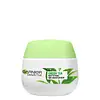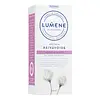What's inside
What's inside
 Key Ingredients
Key Ingredients

 Benefits
Benefits

 Concerns
Concerns

 Ingredients Side-by-side
Ingredients Side-by-side

Alcohol Denat.
AntimicrobialBenzyl Alcohol
PerfumingBenzyl Salicylate
PerfumingCamellia Sinensis Leaf Extract
AntimicrobialCaprylyl Glycol
EmollientSodium Carbomer
Emulsion StabilisingDicaprylyl Ether
EmollientGeraniol
PerfumingGlycerin
HumectantGlycine Soja Oil
EmollientLimonene
PerfumingLinalool
PerfumingMaltodextrin
AbsorbentParfum
MaskingPolyglyceryl-3 Methylglucose Distearate
EmulsifyingSalicylic Acid
MaskingSodium Phytate
Stearyl Alcohol
EmollientTocopherol
AntioxidantXanthan Gum
EmulsifyingAlcohol Denat., Benzyl Alcohol, Benzyl Salicylate, Camellia Sinensis Leaf Extract, Caprylyl Glycol, Sodium Carbomer, Dicaprylyl Ether, Geraniol, Glycerin, Glycine Soja Oil, Limonene, Linalool, Maltodextrin, Parfum, Polyglyceryl-3 Methylglucose Distearate, Salicylic Acid, Sodium Phytate, Stearyl Alcohol, Tocopherol, Xanthan Gum
Water
Skin ConditioningOctyldodecyl Myristate
EmollientBetaine
HumectantGlycerin
HumectantPropanediol
SolventArachidyl Alcohol
EmollientButyrospermum Parkii Butter
Skin ConditioningPrunus Amygdalus Dulcis Oil
Skin ConditioningHydrogenated Palm Kernel Glycerides
EmollientCetearyl Alcohol
EmollientBehenyl Alcohol
EmollientEriophorum Spissum Flower/Stem Extract
Skin ConditioningPhenoxyethanol
PreservativeArachidyl Glucoside
EmulsifyingDimethicone
EmollientCetearyl Glucoside
EmulsifyingSodium Polyacrylate
AbsorbentHydrogenated Palm Glycerides
EmollientEthylhexylglycerin
Skin ConditioningAllantoin
Skin ConditioningPEG-8
HumectantTocopherol
AntioxidantPotassium Sorbate
PreservativeAscorbyl Palmitate
AntioxidantSorbic Acid
PreservativeAscorbic Acid
AntioxidantCitric Acid
BufferingBenzyl Salicylate
PerfumingCitronellol
PerfumingLimonene
PerfumingParfum
MaskingWater, Octyldodecyl Myristate, Betaine, Glycerin, Propanediol, Arachidyl Alcohol, Butyrospermum Parkii Butter, Prunus Amygdalus Dulcis Oil, Hydrogenated Palm Kernel Glycerides, Cetearyl Alcohol, Behenyl Alcohol, Eriophorum Spissum Flower/Stem Extract, Phenoxyethanol, Arachidyl Glucoside, Dimethicone, Cetearyl Glucoside, Sodium Polyacrylate, Hydrogenated Palm Glycerides, Ethylhexylglycerin, Allantoin, PEG-8, Tocopherol, Potassium Sorbate, Ascorbyl Palmitate, Sorbic Acid, Ascorbic Acid, Citric Acid, Benzyl Salicylate, Citronellol, Limonene, Parfum
Ingredients Explained
These ingredients are found in both products.
Ingredients higher up in an ingredient list are typically present in a larger amount.
Benzyl Salicylate is a solvent and fragrance additive. It is an ester of benzyl alcohol and salicylic acid. This ingredient can be naturally found in some plants and plant extracts.
In fragrances, Benzyl Salicylate may be a solvent or a fragrance component. In synthetic musk scents, it is used as a solvent. For floral fragrances such as lilac and jasmine, it is used as a fragrance component. The natural scent of Benzyl Salicylate is described as "lightly-sweet, slightly balsamic".
While Benzyl Salicylate has been associated with contact dermatitis and allergies, emerging studies show it may not be caused by this ingredient alone.
However, this ingredient is often used with fragrances and other components that may cause allergies. It is still listed as a known allergen in the EU. We recommend speaking with a professional if you have concerns.
Another study from 2021 shows Benzyl Salicylate may have anti-inflammatory properties.
Learn more about Benzyl SalicylateGlycerin is already naturally found in your skin. It helps moisturize and protect your skin.
A study from 2016 found glycerin to be more effective as a humectant than AHAs and hyaluronic acid.
As a humectant, it helps the skin stay hydrated by pulling moisture to your skin. The low molecular weight of glycerin allows it to pull moisture into the deeper layers of your skin.
Hydrated skin improves your skin barrier; Your skin barrier helps protect against irritants and bacteria.
Glycerin has also been found to have antimicrobial and antiviral properties. Due to these properties, glycerin is often used in wound and burn treatments.
In cosmetics, glycerin is usually derived from plants such as soybean or palm. However, it can also be sourced from animals, such as tallow or animal fat.
This ingredient is organic, colorless, odorless, and non-toxic.
Glycerin is the name for this ingredient in American English. British English uses Glycerol/Glycerine.
Learn more about GlycerinLimonene is a fragrance that adds scent and taste to a formulation.
It's found in the peel oil of citrus fruits and other plants such as lavender and eucalyptus. The scent of limonene is generally described as "sweet citrus".
Limonene acts as an antioxidant, meaning it helps neutralize free radicals.
When exposed to air, oxidized limonene may sensitize the skin. Because of this, limonene is often avoided by people with sensitive skin.
The term 'fragrance' is not regulated in many countries. In many cases, it is up to the brand to define this term. For instance, many brands choose to label themselves as "fragrance-free" because they are not using synthetic fragrances. However, their products may still contain ingredients such as essential oils that are considered a fragrance.
Learn more about LimoneneParfum is a catch-all term for an ingredient or more that is used to give a scent to products.
Also called "fragrance", this ingredient can be a blend of hundreds of chemicals or plant oils. This means every product with "fragrance" or "parfum" in the ingredients list is a different mixture.
For instance, Habanolide is a proprietary trade name for a specific aroma chemical. When used as a fragrance ingredient in cosmetics, most aroma chemicals fall under the broad labeling category of “FRAGRANCE” or “PARFUM” according to EU and US regulations.
The term 'parfum' or 'fragrance' is not regulated in many countries. In many cases, it is up to the brand to define this term.
For instance, many brands choose to label themselves as "fragrance-free" because they are not using synthetic fragrances. However, their products may still contain ingredients such as essential oils that are considered a fragrance by INCI standards.
One example is Calendula flower extract. Calendula is an essential oil that still imparts a scent or 'fragrance'.
Depending on the blend, the ingredients in the mixture can cause allergies and sensitivities on the skin. Some ingredients that are known EU allergens include linalool and citronellol.
Parfum can also be used to mask or cover an unpleasant scent.
The bottom line is: not all fragrances/parfum/ingredients are created equally. If you are worried about fragrances, we recommend taking a closer look at an ingredient. And of course, we always recommend speaking with a professional.
Learn more about ParfumTocopherol (also known as Vitamin E) is a common antioxidant used to help protect the skin from free-radicals and strengthen the skin barrier. It's also fat soluble - this means our skin is great at absorbing it.
Vitamin E also helps keep your natural skin lipids healthy. Your lipid skin barrier naturally consists of lipids, ceramides, and fatty acids. Vitamin E offers extra protection for your skin’s lipid barrier, keeping your skin healthy and nourished.
Another benefit is a bit of UV protection. Vitamin E helps reduce the damage caused by UVB rays. (It should not replace your sunscreen). Combining it with Vitamin C can decrease sunburned cells and hyperpigmentation after UV exposure.
You might have noticed Vitamin E + C often paired together. This is because it is great at stabilizing Vitamin C. Using the two together helps increase the effectiveness of both ingredients.
There are often claims that Vitamin E can reduce/prevent scarring, but these claims haven't been confirmed by scientific research.
Learn more about Tocopherol